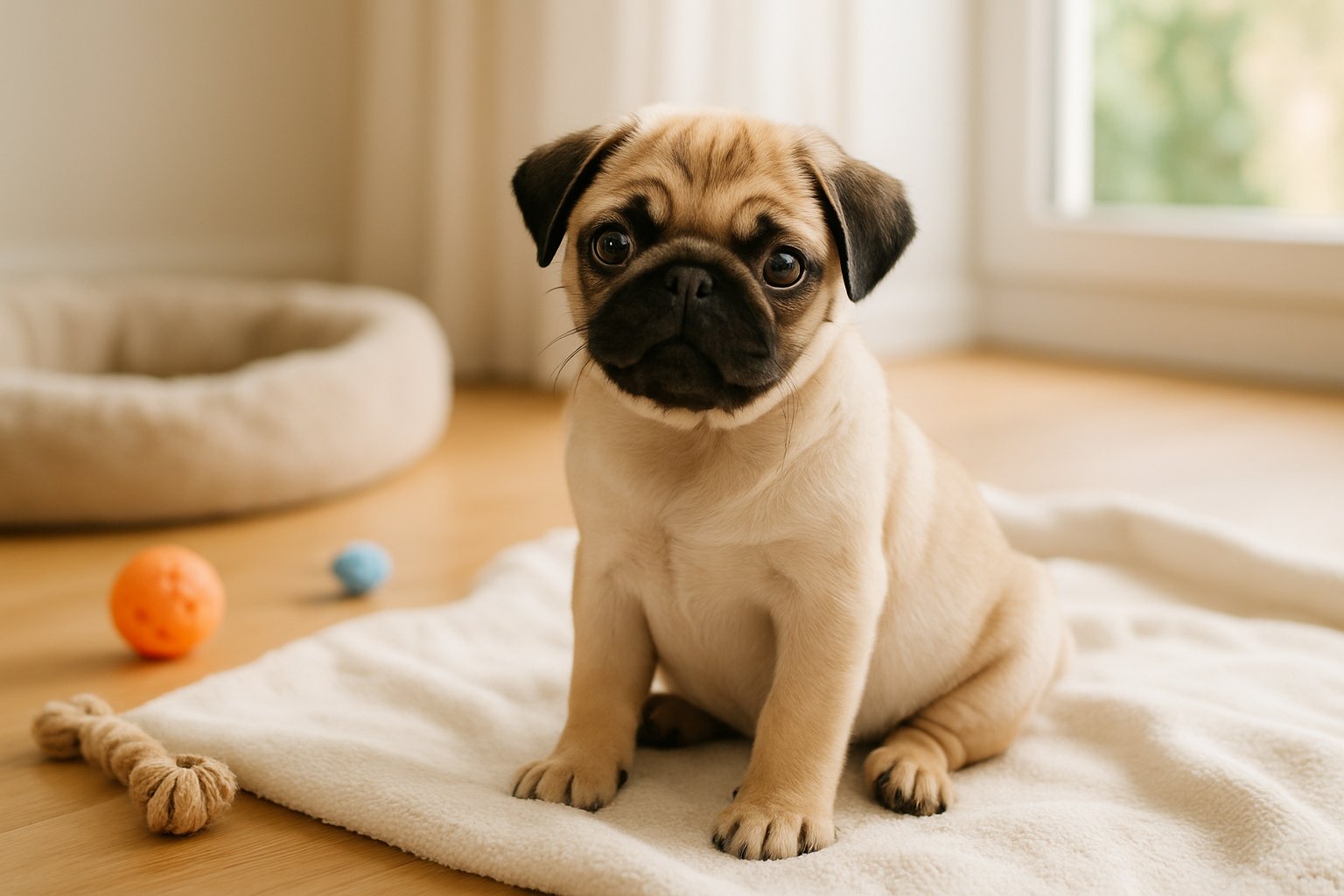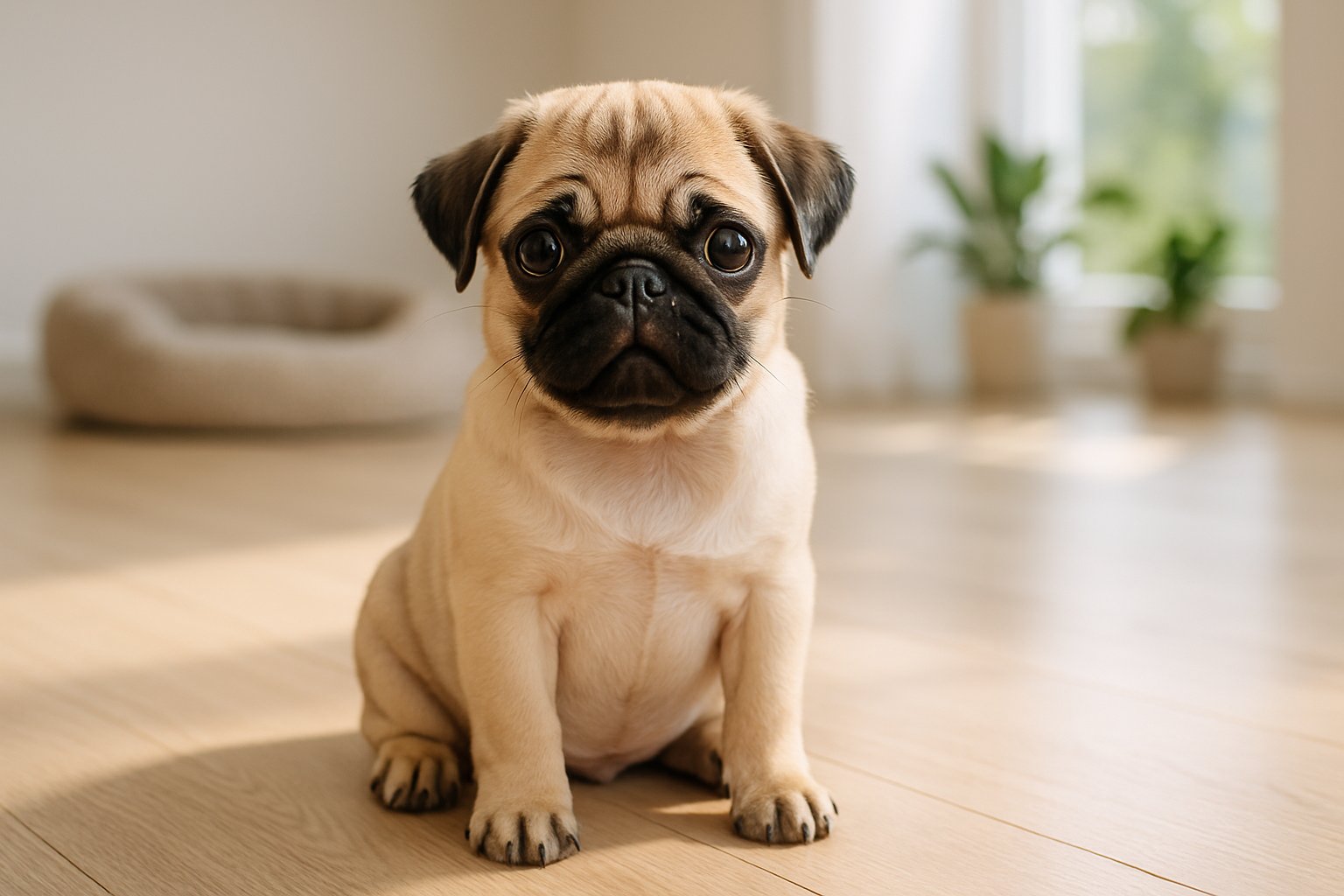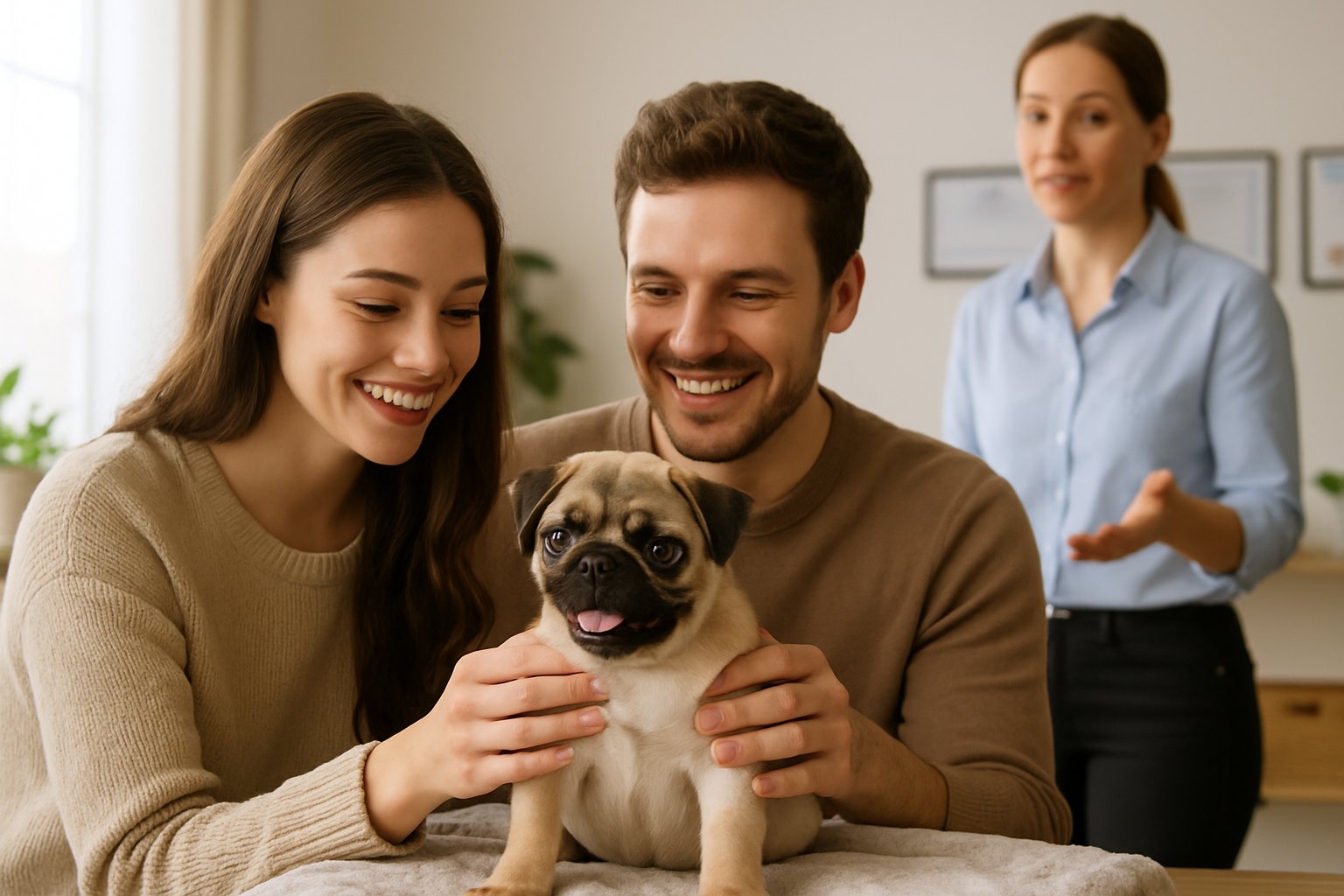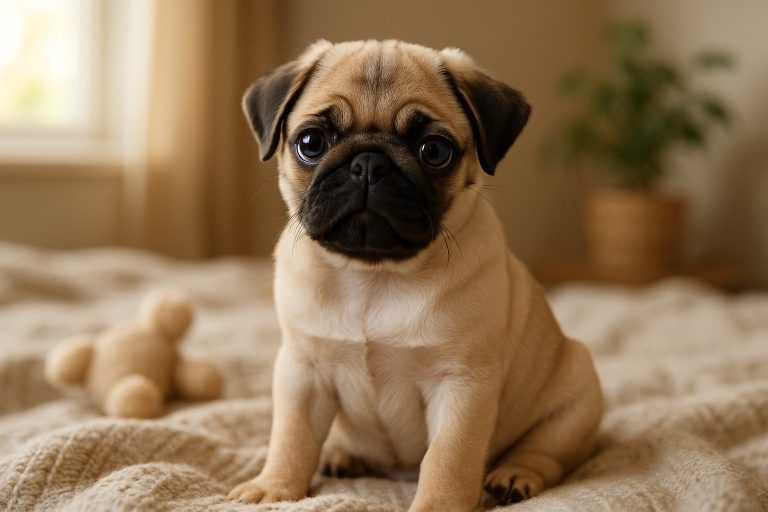About The Pug

Pugs are a small dog breed known for their short nose, wrinkled face, and curled tail. Their sturdy, compact bodies make them easy to carry. You will often see them in fawn or black colors. This breed is friendly and likes to be around people. If you have children or other pets, Pugs usually get along well. Pugs are not high-energy dogs, but they are playful. You may need to watch their weight since they can become overweight if not exercised.
Here are a few important facts about Pugs:
| Height | 10–13 inches |
|---|---|
| Weight | 14–18 pounds |
| Life Span | 12–15 years |
| Shedding | Moderate to heavy |
| Temperament | Gentle, loving, social |
Pugs have a short coat. Brushing them a few times a week helps manage shedding.
Pros of Pugs:
- Friendly and loyal
- Good with kids
- Don’t need much space
Cons of Pugs:
- Prone to breathing problems
- Shed a lot
- Can be stubborn during training
Due to their flat faces, Pugs can have trouble in hot weather. Watch for signs of overheating and keep them cool.
Is This The Right Breed For You?

Pugs are small, sturdy dogs with a friendly and loving nature. They enjoy being around people and often like to sit on your lap or follow you from room to room. You should know pugs can be stubborn during training. They respond best to gentle, consistent methods and lots of positive rewards.
These dogs do not need much space and fit well in apartments or houses. Pugs need short walks and some playtime each day but do not require intense exercise.
Here are some key points about pugs:
| Trait | Details |
|---|---|
| Size | Small (typically 14-18 pounds) |
| Temperament | Playful, affectionate, sometimes silly |
| Grooming | Moderate shedding, regular brushing |
| Energy Level | Low to moderate |
Pugs often snore and snort because of their short noses. You should be ready for a lot of funny sounds and maybe even some drooling. Heat and humidity can be hard on pugs. They need cool places to rest and should not be left outside in hot weather.
These dogs thrive on your attention. If you are gone much of the day, a pug might not be happy left alone for long. If you want a companion dog who is usually cheerful and loves cuddling, a pug could fit well with your lifestyle.
Where To Buy A Pug Puppy Or Dog

You have several options when looking for a Pug puppy or dog. Each option has pros and cons, so it’s good to compare what works best for you and your family.
Reputable Breeders:
Buying from a trusted breeder helps ensure the puppy is healthy and well-cared for. Breeders can provide health records and information about the puppy’s parents. You can browse listings of AKC-registered Pug breeders and puppies at the AKC Marketplace. You may also find screened breeders in your area through Puppy Spot.
Adoption and Rescue Groups:
Shelters and rescue groups sometimes have Pug puppies or adult dogs available. If you want to adopt and help a dog in need, check local shelters or breed-specific rescues.
Pet Stores:
Some pet stores sell Pug puppies, but you should be very careful. Always research where the store gets their dogs and ask for health and background information.
Here is a quick comparison:
| Option | Health info available | Chance to meet parents | Likely cost |
|---|---|---|---|
| Breeder | Yes | Usually | Higher |
| Rescue/Shelter | Sometimes | Rarely | Lower |
| Pet Store | Sometimes | Rarely | Varies |
When you are ready, try reaching out to breeders that are open about their breeding practices. Many will let you visit their facility and answer questions before you decide. Always ask for health records, vaccination info, and details about the puppy’s care to make the best choice.
How To Choose A Reputable Breeder Or Platform

When looking for pug puppies, make sure to work with a breeder or platform that you can trust. Look for signs that the puppies are raised in a safe, clean, and friendly environment.
Key features of a reputable breeder:
- Allows you to visit their home or kennel
- Shares the health history of both puppy parents
- Performs genetic testing on parent dogs
- Has clear contracts and return policies
- Is willing to answer all your questions
Tip: Avoid breeders who refuse visits, do not share health records, or pressure you to buy quickly.
Some breeders belong to local or national breed clubs. These groups hold their members to certain standards and may offer lists of approved breeders. Checking with a recognized club, like the Pug Club of America, can help you find breeders in your area.
It’s important to watch for scams online. Many sites offer cheap or rare pug puppies, but these deals are often too good to be true. Safe platforms will provide vet records and are clear about their location and breeding practices. If you want extra confidence, ask the breeder for references from past puppy buyers. This can help you understand their reputation and the experience of other customers.
Getting Your New Pup Home
Before you bring your pug puppy home, set up a safe space just for them. Baby gates can help block off unsafe areas like stairs or the kitchen. Make sure cleaning supplies and sharp objects are out of reach—pugs are curious by nature.
You’ll need basic supplies ready in advance. Here’s a quick checklist:
| Essential Item | Purpose |
|---|---|
| Crate or Bed | Safe, cozy resting place |
| Food and Water Bowls | Easy access to food and water |
| Puppy Food | Proper nutrition |
| Chew Toys | Prevents chewing on furniture |
| Collar & Lead | For walks and identification |
- Let your new pug puppy settle in slowly. Keep introductions to new spaces and people calm and short at first. This helps reduce stress and allows your puppy to get comfortable.
- Pug puppies may have accidents early on. It’s helpful to keep potty training pads nearby and take frequent trips outside. Stay patient and use treats or gentle praise to reward good behavior.
- Make your home safe by using baby gates and removing temptations like loose wires or open trash cans. Learn more about puppy-proofing from this guide to houseproof for a new pug puppy.
- If you have other pets, introduce them gradually in a controlled environment. Supervise their first meetings to keep stress low for both sides.
- Having everything set before you bring your puppy home will help your new companion adjust quickly and happily.




